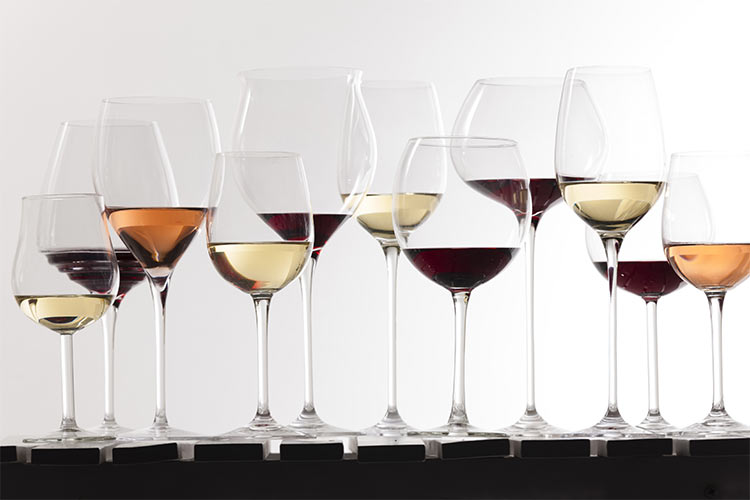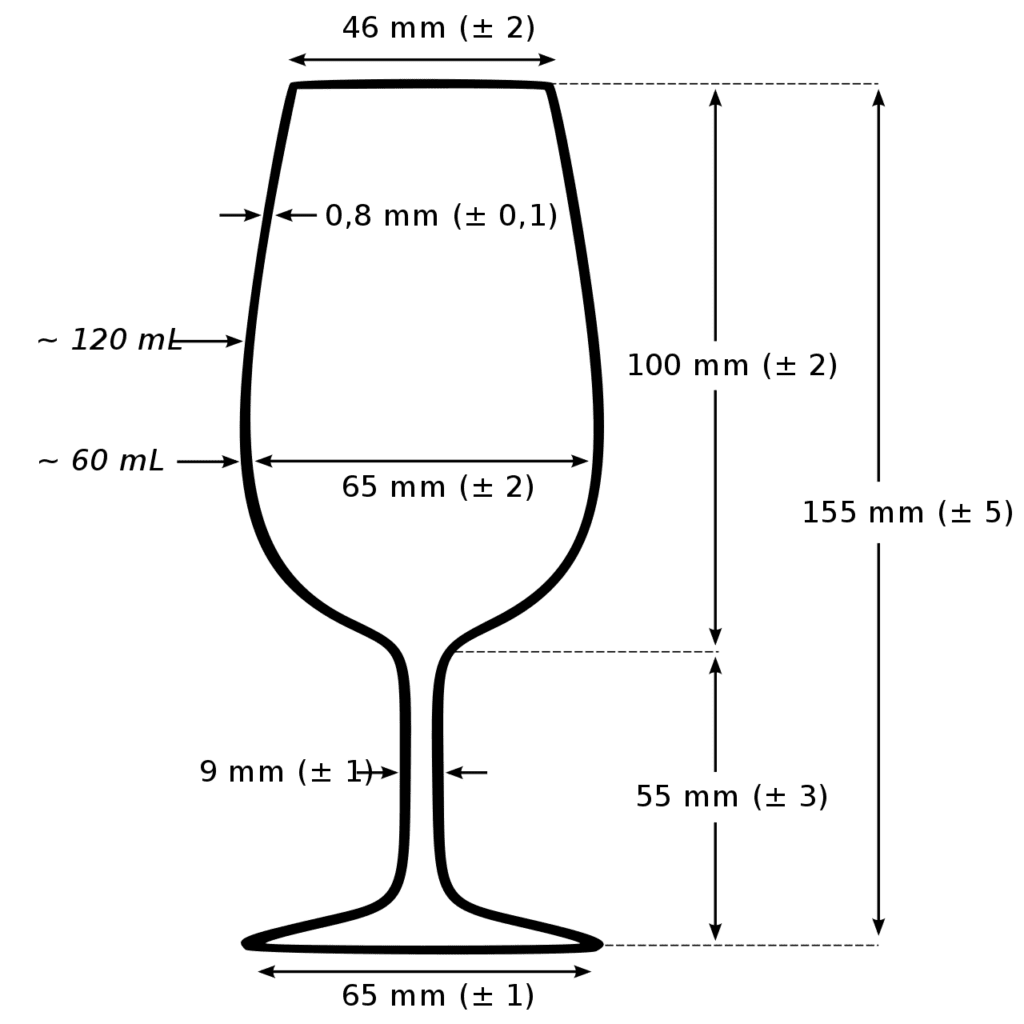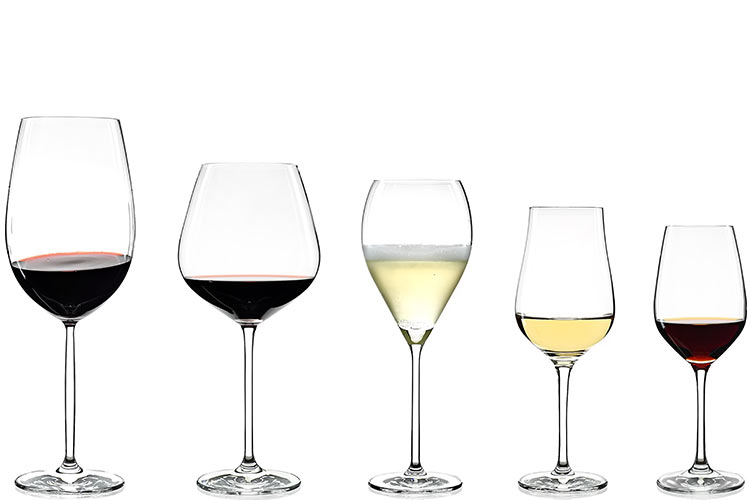The enjoyment of wine is sometimes known for its pretentiousness, things that can make the outsider roll their eyes. And while some of the trappings may seem more religion than truth, there are a few that can be justified. One such truth: Wine glasses can enhance the pleasure of drinking wine. Yes, the design of a wine glass can actually affect how a wine tastes. So, let’s learn more about the science behind it and how to get the best wine glasses for savoring every sip.
Riedel: The Best Wine Glasses in the World?

Perhaps the best-known wine glassmaker in the world is Austria’s Riedel. The company has been making glassware since the 1700s, but it wasn’t until the 1950s that 9th generation owner Claus Josef Riedel noticed that the flavors of his wine changed depending on which glass he drank from. He introduced his first specialty wine glass for Burgundy reds, in 1958.
Riedel has been at the forefront of this endeavor ever since and while they certainly can claim to be pioneers, some of the observations they make about their wine glasses are a little difficult to, uh, swallow. For example, they claim that the diameter and “roll,” of the glasses’ rims can direct a wine onto different taste buds, enhancing specific characteristics; but this thinking is based on flawed science about the tongue itself that is now considered outdated.
As with most passions of taste, there is some grey area between fact and fiction. Here is what we do know.
Wine Tasting Is a Holistic Experience: Using all of Your Senses
Scientists concur that between 80-90% of our sense of taste is actually our sense of smell. Our mouth, throat, and nose are physically interconnected (via the retronasal passage) and work in concert with each other to create an overall picture of what most of us refer to as flavor. This is why it’s difficult to taste anything when we have a stuffy nose.
Part of how we taste is informed by cues we receive from other senses before the food or drink even hits our palate: Everything from the color to the texture, the smell and even the sound (think the fizz of soda or the crackle of freshly baked bread) can lead us towards certain expectations that affect how we taste something.
The flavor compounds in a wine are a known and measurable quantity and once in the mouth, are working in roughly the same way for all people. In other words, once the wine has left the glass, generally speaking, all palates are the same.
So, this is one of those cases where the pleasure is actually in the journey: Getting the wine to your mouth accounts for a large part of the experience. And this is where a wine glass really can make a difference.
What to Look for in a Quality Wine Glass
Studies have been done to demonstrate the effectiveness of a well-designed wine glass. The conclusion? Despite the different shapes and sizes the most important feature was a large bowl, which universally enhanced the aromas of the wine by facilitating more surface contact with oxygen. An ample bowl also enables swirling of the wine, another key to unlocking its aromas. And long, tapered sides condense those aromas up to your nose, which we now know constitutes a huge part of the experience.
When shopping for a wine glass, focus most of your attention on the shape of the bowl. The sides should be relatively deep and taper inward towards the rim. No coincidence, we needn’t look any further than nature itself: The perfect wine glass mimics the shape of a rose or tulip flower – both perfect for sniffing!
Despite the claims Riedel makes about the rim/edge of the glass, there’s no proof that this feature changes the flavor of a wine. More likely it’s the tactile quality on the lips that adds to the pleasure of drinking, so crystal glasses with a thinner edge do tend to feel more refined.
And seeing the wine itself is obviously important to the experience. A study was done where red food coloring was added to white wine and test subjects unwittingly described it using red wine terms. We’re constantly using our eyes to size up the world around us: To really immerse yourself in your wine, it does help to see it through clear, brilliant glass.

Crystal or Glass?
Now that we know what’s really important, the other features of a wine glass are more a matter of taste (as in, style). You can find wine glasses made of practically every material known to man, including plastic and metal, but for the best results, glass and crystal are still the best.
Glass, while not as refined, is more durable and great for everyday use. It’s also non-porous and inert, meaning that it won’t absorb chemical aromas or corrode if you wash it in your dishwasher. Because it’s affordable and durable this is a popular choice for restaurants and bars. The Greenwich series from Libbey is a great option in this category.
Crystal is typically spun thinner, which feels more luxurious but is also fragile which means it should be hand-washed, carefully. Every seasoned wine lover can probably show you a scar or two from an unfortunate mishap while hand-washing crystal. It’s also porous, which can absorb odors if not washed properly. But crystal is the preferred choice for savvy wine lovers, high-end establishments, and professionals because it’s a more elegant experience. Brands like Riedel, Schott, and Zalto are some of the best money can buy.

Wine Glasses Can Make a Difference
Wine has been around for thousands of years so it’s no surprise we’ve created a lot of pomp and circumstance to celebrate it. We tend to complicate things. That being said, the joy of savoring can actually be quite simple with the help of some well-crafted equipment and your own senses. Once you have the right glasses in your cabinet, immersing yourself in the wine itself becomes that much easier.
It turns out that wine glasses are not just a vehicle for delivering wine to your lips. In the time from the bottle to your palate, a lot can happen to add to the joy of savoring. To paraphrase a well-known saying, our biggest sense organ is our brain. Good wine glasses enhance the perceivable qualities of a wine while simultaneously tantalizing all of our pleasure centers – even the intangible ones!
Of course, for the optimum experience, it matters how you’ve cared for your wine before opening. Learn more about proper storage here.

